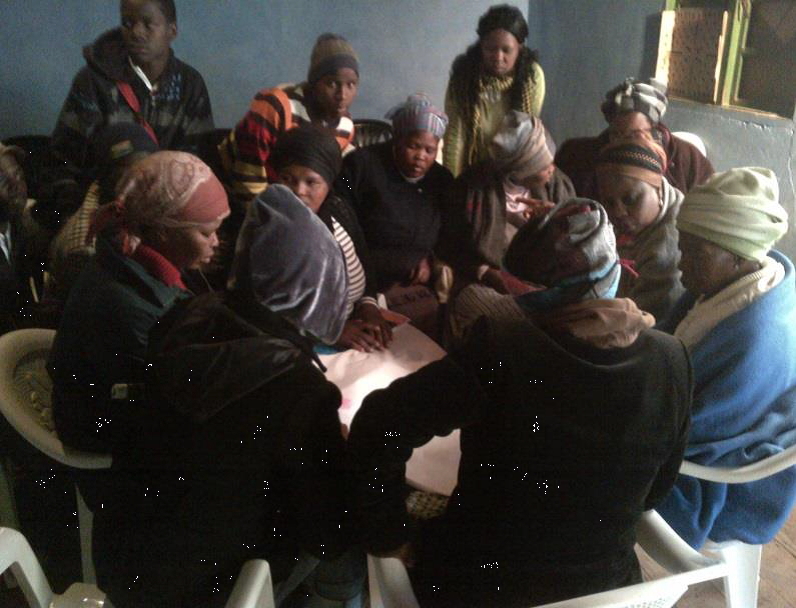Changing the World One Step at a Time

By Janet Selato, ACDI master's student classs of 2016
Have you noticed how changing a habit takes such huge effort? It is often very difficult to break away from our preconditioned patterns. I notice how I always sit at the same seat in classroom, go to the same spot in the library or follow the same eating patterns. It is amazing how humans establish comfort zones which become hard to wean from in the long run. At Project 90 by 2030 everyone is a change agent.
Evolution of Project 90 by 2030
Project 90 by 2030 is national NGO with a mission to inspire, mobilize a low-carbon society. It challenges South Africans to ‘think and act differently’. Brenda Martin, the founding director from 2007 – 2014 made a presentation at ACDI about lessons learnt at Project 90 in driving climate-related behaviour change. As expected from a change advocate NGO, there has been great transformation since its inception. It shifted focus from the original carbon footprint reduction in wealthy households to current national sustainable lifestyles and climate policy.
Focus Programmes
The organization has set up four programmes, namely communications, policy & research, community partnership, youth leadership. In the communication and policy & research themes Brenda highlighted that Project 90 plays an advocacy role by engaging different NGOs and other stakeholders to drive change towards low-carbon pathways. It is a link between civil society and the government. For instance, it creates platforms for open discussions and knowledge sharing on international climate change issues and national policies. This creates mutual understanding between players and facilitates collaborative, ambitious action. The climate component of policies is made accessible to the stakeholders and public which makes policy makers answerable for their decisions.
Concerning community and youth leadership Project 90 has engagements with schools to build leadership clubs. Organizations have also been encouraged to reduce their carbon footprint. There have been interactions with the communities in the form of meetings and community projects. The projects include energy, water and food security projects as well as impartation of skills and knowledge through workshops. Brenda stressed the importance of engagement with the community right at planning stage of the projects and respect for their beliefs and customs.

Community project planning meeting (Source: Project 90 at 2030)
She also said working with the youth has challenged the organization to be innovative in the delivery of messages to make them interesting. For example films, documentaries, school projects and conference debates are used to actively engage the youth in climate change issues. In the young climate leaders programme, youth identified a climate theme to focus on from which projects could evolve.
Driving Behaviour change
Often we think behaviour change is a once-off thing but it is a process that starts with imagination and action before a tangible outcome is reached. A summary of the theory of behaviour change was said to involve willingness to see, hear and ability to make linkages which involve one’s values, mind, imagination and heart. Well communicated, reliable and relevant knowledge was said to aid behaviour change but on its own knowledge will not translate into change. An example that comes to my mind to illustrate this is knowing speed kills but still driving at a high speed on the roads. Or coming closer home, as climate change advocates we emphasize reducing carbon footprint but would never imagine taking public transport, cycling or giving up one of the many electric appliances we have. Instead we say they are energy efficient. So it takes much more than knowledge and information to change.
Further on in the presentation Brenda stated that policy can be used to drive the change by either using incentives, disincentives or be supportive to make change happen. One can also change behaviour by emulating social norms and trends. As a global world we see cross-cultural practices taking place in societies to imitate popular ones. Lastly, one can initiate behaviour change by building movements which involves inspiring, mobilizing people and embracing change.

Students making a wind turbine for a school project (Source Project 90 at 2030)
Lessons Learnt from Project 90
Brenda shared lessons learnt from behaviour change theory and practice. She said one needs to have a clear, simple idea with wide appeal which stands to benefit majority of people. Reliable evidence is necessary but she cautioned its acceptance doesn’t mean change of behaviour will take place. Consultative, regular goal-driven behaviour planning is important. Yogi Berra once said “If you don’t know where you are going, you will end up someplace else”.
Brenda went on to say there is need to build networks which are aligned and cross cutting and to invest time in them, keeping them as diverse as possible to avoid ‘group think’. Capacity building of all stakeholders is vital, learning from others, especially from communities, and being vigilant of unforeseen circumstances. She concluded by saying as a change agent one needs to constantly check one’s own commitment to change, how much changing one is doing oneself and what one is willing to give up in order to change.
The audience was given opportunity to comment. One audience member noted that excuses are normally a hindrance to change. Another mentioned that change can be driven by morality or necessity.
We need to change:
The above tips can be used to mobilise people to change their behaviour concerning climate change. But are we the change we want see? Let’s reduce our consumption patterns, save water, recycle to save our planet. Speak and act the change you want to see!
Disclaimer: The views expressed here are solely those of the author in her private capacity